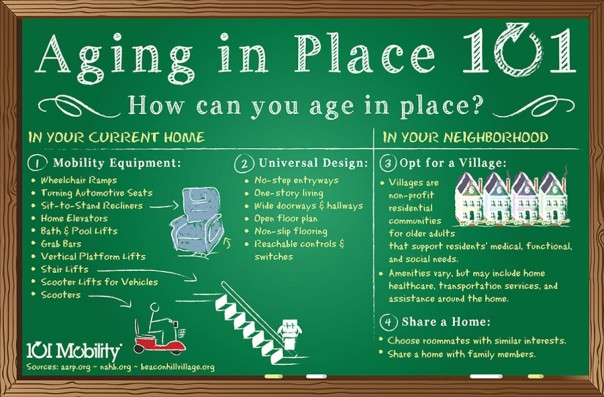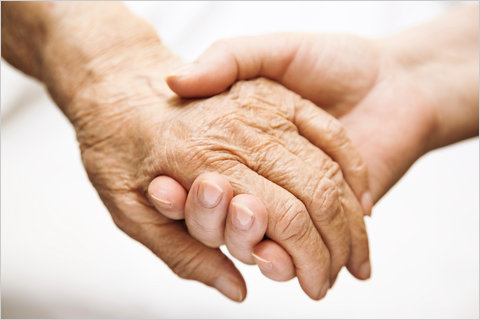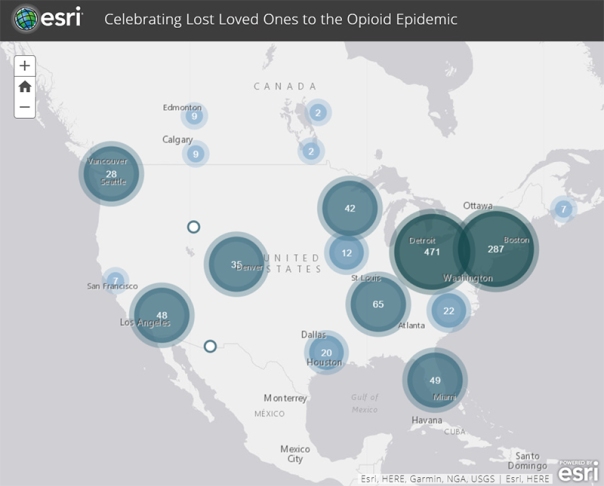Category Archives: Uncategorized
Products to Help Seniors Age-In-Place
If your parents have the desire to age in place, there are products and tools available to help with any deficiencies they may have. Living at home can be a safe and healthy option and allow them to stay independent.
Here are some products and tools to help your loved one age in place:
1. Medication Adherence- It can be a potentially dangerous scenario for seniors who are noncompliant with their medication regimen. Products are available to help your loved one remember to take their medication at the right time. e-pill Medication Reminders offers a line of products ranging from a simple pillbox, pillbox timers, wearables (reminder watch), and automatic pill dispensers. These products will help your senior “Never Forget to Take their Medications Again!

For more information on medication reminder products visit: https://www.epill.com
2. Cell Phone and Smartphones- The Jitterbug offers big buttons, large text, large screen and simple menus.

For more information on the Jitterbug cellphone visit: https://www.greatcall.com/phones/jitterbug-flip-cell-phone-for-seniors-v2
3. Emergency pendant, fall detection- worn around the neck or wrist will alert first responders or preprogrammed numbers of family members if your senior is in need of emergency help.

For more information visit: https://www.consumer.ftc.gov/articles/0316-personal-emergency-response-systems-health-information-older-people
4. Video monitoring- Allows you to have visual contact with your senior. You can gauge how they are doing thru your interactions with them and see the state of their living situation. Many senior enjoy face-to-face interactions versus a phone call.

“Aging in place” means to keep seniors in their own home for as long as possible. Living alone is not an easy task, especially when you are a senior. There’s a lot of hazards that you have never realized and they could be very dangerous. There are many solutions out there for you to choose from. One of the best solutions is to have a professional to inspect the house, so you have nothing to worry.
Aging-In-Place Home Ideas
Aging-In-Place can be made easier with a few small additions or enhancements to each room in your home. As we age it helps to consider accessibility, which is easier to achieve with a simple layout, free space, grab bars, and good lighting throughout all rooms. Let’s take a look at some specific rooms.
Kitchen:
The kitchen can be made more accessible by changing the height of cabinets and appliances, and ease of access to items inside of cabinets.
If you have a budget for renovation, it may be worth consulting a Certified Aging-In-Place Specialist or your local cabinet-maker.
A few smaller installations you can do to help someone age-in-place in their kitchen include:
• a shallow/motorized sink
• Hands-free or lever-handled faucet
• Easy-to-reach water filtering devices
• “D” shaped pulls/handles on cabinets, doors, and drawers
• Pull-Out Shelves to Lower and Upper Cabinets
All appliances should be well-lit, easy to use, and easy to see!
Bathroom:
Plan for the use of canes, wheelchairs, walkers or similar assistive devices by making sure the bathroom has plenty of free space.
Ensure the toilet is at a proper height or purchase a seat extender.
Installing grab bars is an easy and economic way to increase safety in the bathroom. They can be placed on the interior or exterior of the tub or shower, as well as near the toilet to help with sitting and standing. Grab bars are no longer all cold and metal- today many styles and colors are available to match your taste.
Shower seats, anti-slip coating, and adjustable shower heads can make showers much more accessible. walk-in tubs can also be considered.
Bedroom:
Safety handles can be installed on the bed to allow easier access and reduce the potential for falling. Much like grab bars, these handles no longer look so clinical and can complement the decor of the room.
Having a working phone beside the bed may also be important in case there is a need to call for help. this phone should be corded or have a backup battery in case of power outage.
Cleaning out clutter in bedrooms is key! Storing heavy items or items you might use regularly on shelves can lead to accidents or things falling. Closets and Bedrooms should, again, be well-lit to avoid the possiblity of tripping!
Looking for more ideas? Head over to:
https://ageinplace.com/at-home/
https://www.aarp.org/home-garden/housing/info-01-2011/aging_in_your_own_space.html
https://www.houzz.com/aging-in-place http://www.nextavenue.org/8-things-consider-remodeling-age-place/
Caregiver? Career?

There are 44 million unpaid caregivers in the United States and the majority of them are women. Being an unpaid caregiver could be stressful and sometimes close to being impossible. Some women think that they have a good employee and a good daughter at the same because they have to worry about their career and their elderly parents. Is there a perfect way to balance that? Would you choose your elderly parents over your career or the other way around?
Women lost estimated $324,000 in wages because they want to be a good daughter. That is a good amount of money that they have lost. It would be cheaper to hire someone to hire someone to take care of their elderly parents. Women spend 60% of their time being a caregiver. Part of them would miss their promotions or raises at work because of taking care of their elderly parents. Some companies do not like employees to take time off too often, even though it’s because of their elderly parents.
Companies should work with their employees about taking care of their elderly parents. Women and men have to take care of their elderly parents at some point, but they want to keep their career at the same time. Companies should understand their situations and find a solution to help them. Communication is the key to keep a good relationship with their employees. They will work harder if they treat them well. It is not easy to find the balance of being a caregiver and being a good employee. What would you choose if you have to choose? Caregiver? Career?
https://www.usatoday.com/story/opinion/2017/07/25/caregiving-career-its-not-fair-choice/503712001/
Time to Use Tech Devices to Treat Chronic Pain

Opioid addiction is a serious issue in the US. On average of 33,000 people die from opioid overdose and the number has been growing every year. Opioid medications are easy to get prescribed from Doctors and Doctors are willing to prescribe to their patients. What if there are technology devices out there that could ease the chronic pain problems? Would you let your Doctor insert a wire into your body?
There is something called the SPRINT Peripheral Nerve Stimulation (PNS) System. It reduces pain without drugs and it only takes few minutes for the Doctor to insert the wire into your body. It has less side effect than drugs and it is not addictive. This device is on the market and it is FDA approved.
We hope that there will be more technology to help us fight addiction in the future. We understand medications are necessary, but addiction is a major as of now.
Technology in Addiction Recovery Treatment
People have become more reliant than ever on technology to make their lives easier in a variety of ways. There is a surplus of technological resources at our fingertips video communication, cell phone, computer, virtual reality, etc. Virtual reality is becoming increasingly common, and there seem to be apps for all aspect of our lives, no matter how obscured it may be. The same apps we use to play games and chat with friends are now utilized in the medical field to help fight alcohol and drug addiction, changing the way the disease is treated.
Opioid dependence is a serious public health issue. In some opiate replacement therapy with buprenorphine, apps and a secure automatic pill dispenser (http://www.epill.com/medowheelsecur.html) are used in conjunction with one another.
To see a list of apps that can help you on the path to recovery, click here: https://www.addictionrecoveryguide.org/resources/mobile_apps
National Resources to Help Fight the Opioid Epidemic
 This month at e-pill we are taking a look at how technology is helping fight drug addiction. Today we’d like to share some online resources that are helping to educate and spread awareness about the epidemic.
This month at e-pill we are taking a look at how technology is helping fight drug addiction. Today we’d like to share some online resources that are helping to educate and spread awareness about the epidemic.
The U.S. Department of Health & Human Services has an easy-to-navigate resources index on Treatment and Recovery. If you want to learn more about treatment options or find treatment, this page can help.
SAMHSA has a free Helpline runs year-round and receives nearly 65,000 calls per month! 1-800-662-HELP (4357) is the number.
If you have or find prescription drugs that are no longer needed or outdated, it may not be clear where you can bring them. We found Rx Drug Drop Box, which gave us 3 locations within 25 miles of our office. We were able to find more locations by checking with our State. Hopefully there will be more interactive maps for this in the future. There are currently some interactive maps that are based on the county or town you may reside in.
Speaking of interactive maps, Esri’s Jeremiah Lindemann has created a global map titled “Celebrating Lost Loved Ones to the Opioid Epidemic”. This interactive memorial map (shown above) does just that- it honors those who have lost their lives and shows just how big this epidemic is, and how close to home it hits.
Back to School: Getting your Kids to Take Medicine
 As children become older and more independent it’s important to get them into healthy habits of all kinds- including taking medicine. Going back to school means another year of spreading colds, ear infections, and stomach aches along with viral infections like Chickenpox for younger children.
As children become older and more independent it’s important to get them into healthy habits of all kinds- including taking medicine. Going back to school means another year of spreading colds, ear infections, and stomach aches along with viral infections like Chickenpox for younger children.
For others it may mean a new challenge of taking medicine at school for a condition such as ADHD. They have to remember to take medications and may even want or need to go to a private location such as a nurse’s office to do so.
Here at e-pill we have scoured the internet looking for ways to help children cope with these problems, and we have summed them up in 5 steps:
1) Encourage them when it is time to take medicines and maybe even reward them.
To help foster independence, give them some control – something as simple as letting them hold the medicine up or putting the medication in a special cup of their own will help. Have them pick out the flavor. You can even teach older kids to swallow pills as early as age 4- start by dipping pills in cold water or Jell-O. Most importantly, explain to children how important their medication is and why they need to take it so often.
2) Find the best taking medicines and see if they can take them less frequently.
Talk to their doctor to see if there is a different dosage children can be taking for less times each day. Doctors may also be able to find alternatives that taste differently.
3) Add the medicine to food or disguise it with food.
Do you remember your mother mixing in chocolate syrup with your medicines? I certainly do. Many medications can eat eaten in or with food to make them more palatable. Some can be taken with milk, orange juice, or yogurt, and the contents of capsules can be opened or poured into applesauce. Check with doctors to see how you can help “disguise” medicine – it can be as simple as putting liquid medicine in a juice box! Products like Dr. Cocoa or FlavorX can also help.
4) Find a caregiver or nurse.
Kids may be more willing to take medicine from someone other than a parent. When your child is sick at 3AM it can be hard to smile and act positive about giving them medication, and they will be more likely to react poorly if you are not positive. Sometimes it helps to have another authority figure administer medication.
5) Find a way to remind them when to take their medications and keep them on a schedule.
Work with teachers during school hours to make sure they remind students when medication is taken. Use visual reminders at home such as sticky notes, a calendar with fun stickers, or reminder apps on mobile devices. You can also purchase a kid’s smartwatch or our Vibrating Pendant Watch to remind them every day.
Taking medication is something we all have trouble with, whether we do not like the taste, side affects, inconvenience, or we simply cannot remember to take them often enough. We hope this article will help you and your children and we wish everyone a healthy Back-To-School season!
Sources:
http://www.everydayhealth.com/kids-health/10-ways-to-get-kids-to-take-medicine.aspx
http://www.parents.com/toddlers-preschoolers/health/sick-toddler/cleverly-help-medicine-go-down/
http://totallythebomb.com/ways-to-get-a-kid-to-take-medicine
http://www.netdoctor.co.uk/medicines/adhd/a5249/how-do-i-get-my-child-to-take-their-adhd-medicine/
6 Ways to Help Your Child with School Phobia (Social Anxiety)
Back to school season is here. Children are getting ready to go back to school. Some are excited about it, but some are not so much. For the younger age’s group, some of them tend to have a hard time leaving their parents to school or they are anxious about school for a variety of reasons. School Phobia as know as School Refusal is children who have problems going to school or staying in school.
Here are some tips to help the children who are facing that issue.
- Self-help methods could provide relaxation to your child. Be open to new ideas
- Communicate with your about their feelings of school or in general
- Work with school staff for extra support or direction
- Schedule an informal meeting with your child’s teachers.
- Help your child to create hobbies and interests (Sports teams, Clubs, etc)
- Emphasize the positives about going to school. (Friends, New Materials, etc)
Most importantly, your children need your support to get through those situations. As long as they understand you will be there for them with their physical and mental supports.
https://www.anxietybc.com/parenting/helping-your-child-cope-back-school-anxiety
https://adaa.org/living-with-anxiety/children/school-refusal
Heading Back to School with Diabetes
Diabetes is one of the most common diseases among children. For parents of children with diabetes getting ready for the upcoming school year not only means buying school supplies such as backpacks, pencil, notebook, etc. but also diabetes supplies to keep their children safe at school and during school events.
Here are steps you can take to keep your children safe:
1. Notify the school right away if your child has diabetes.
2. Develop a Diabetes Medical Management Plan.
3. Meet with your child school nurse to go over your child health plan.
4. Have a low blood sugar rescue box “Low Box” (items to bring blood glucose levels into range). It will hold anything from juice boxes to fruit snacks to diabetes supplies, i.e., glucose meter, test strips, glucagon pen and lancing device, etc.
5. Be an active member of the school health team.
The American Diabetes Association has a “Safe at School” webinar.
Register for the Back-to-School Advocacy Webinar for Parents of Children with Diabetes held Thursday, August 10th, 2017!
Click here to register: https://cc.callinfo.com/registration/#/?meeting=1k4dpjva34elf&campaign=1v1a6xhga6hc4
